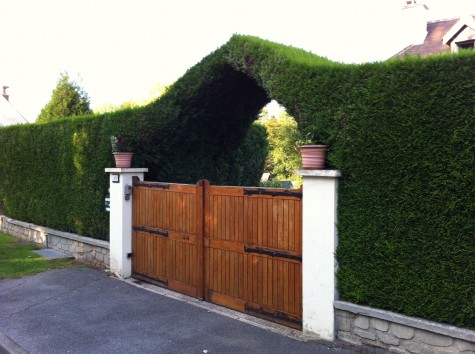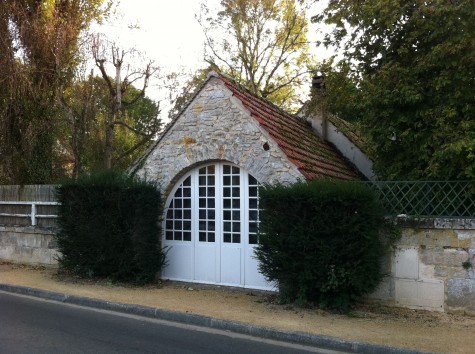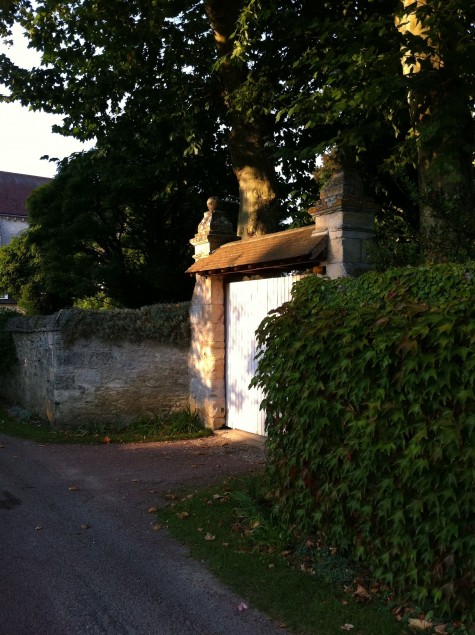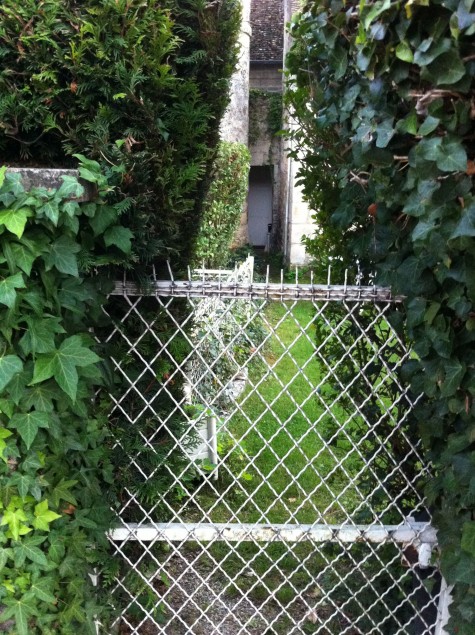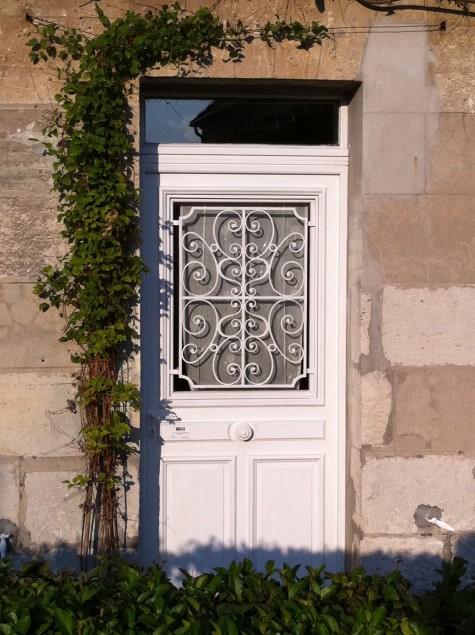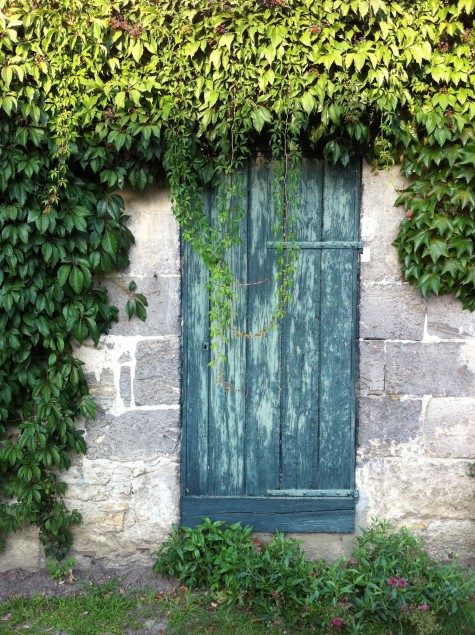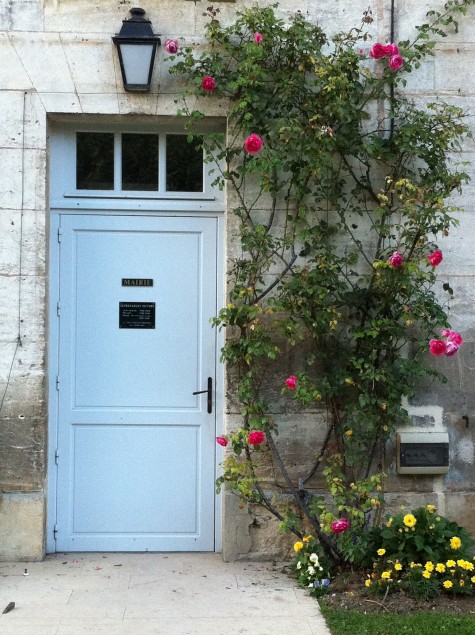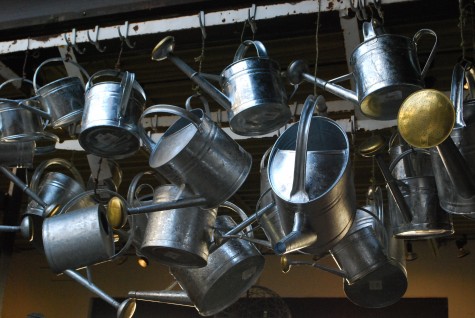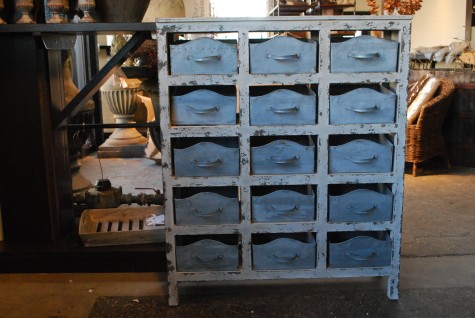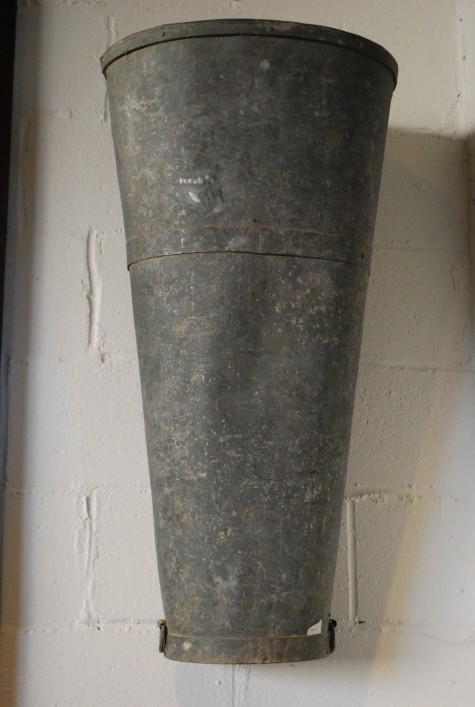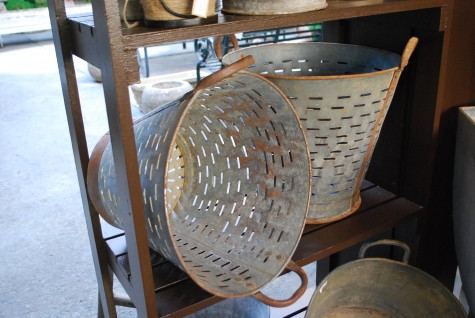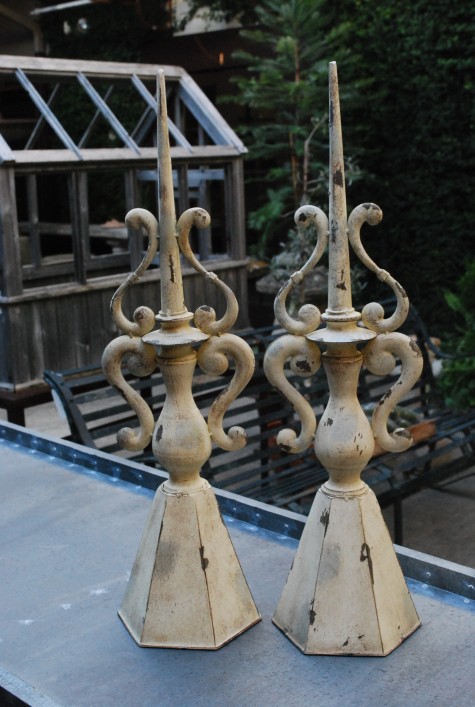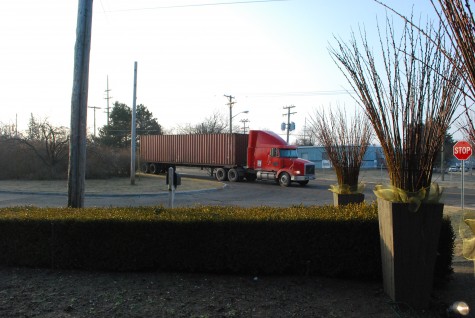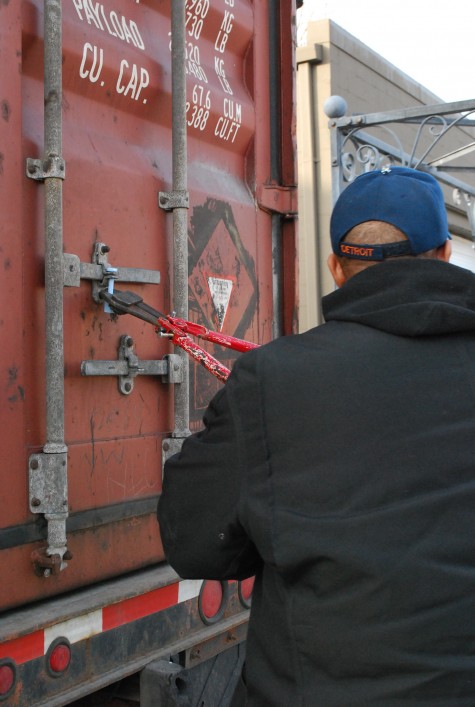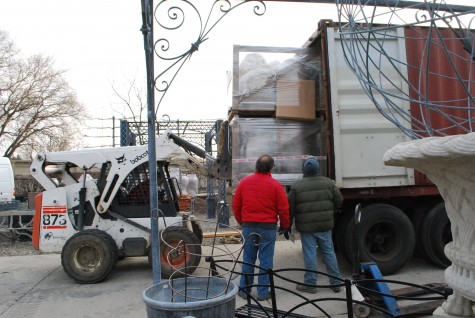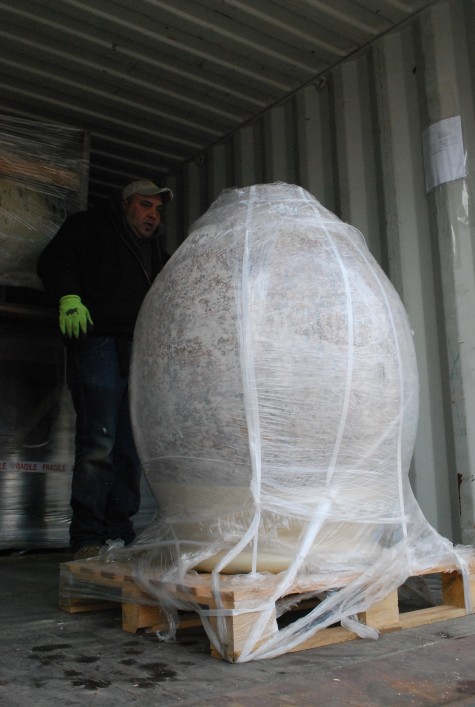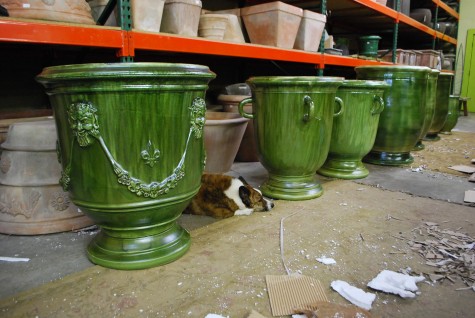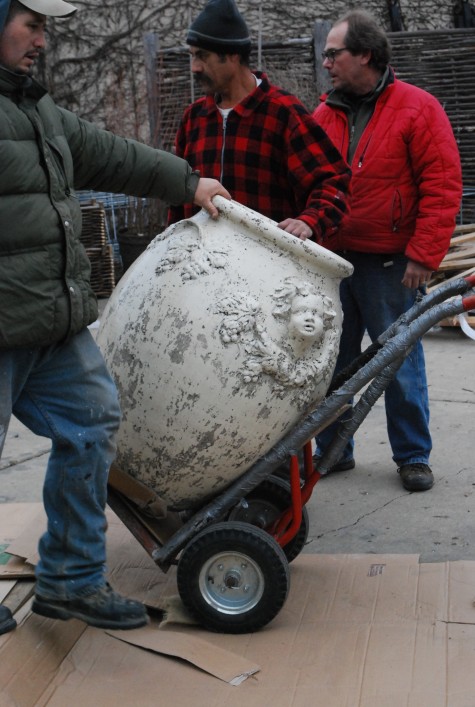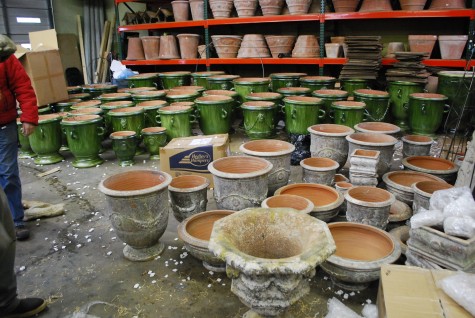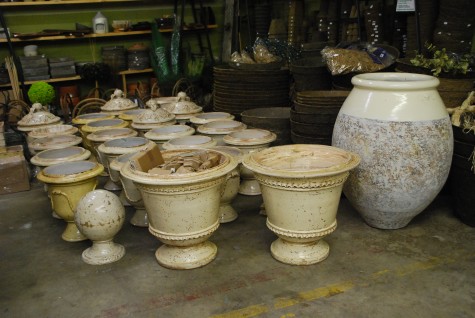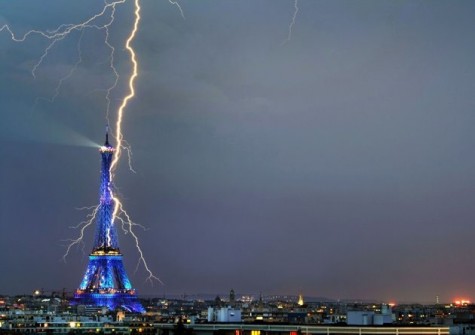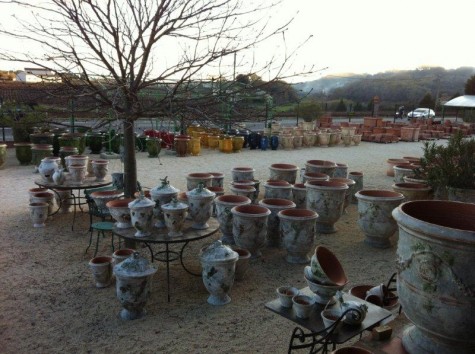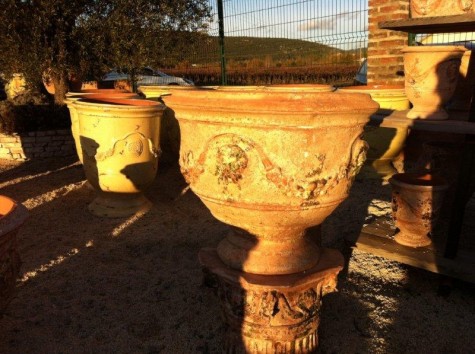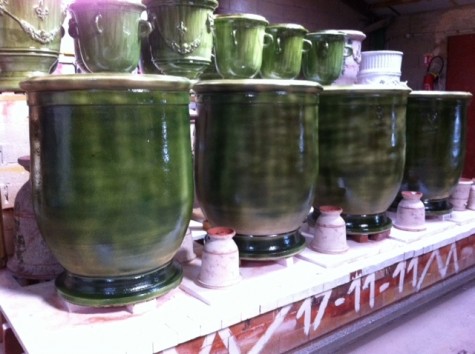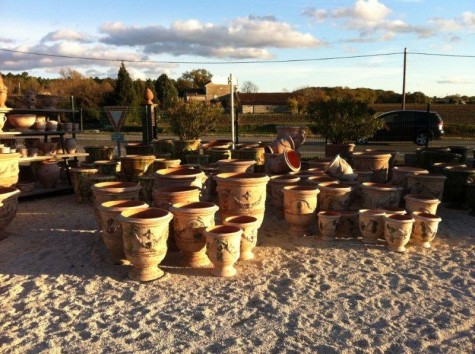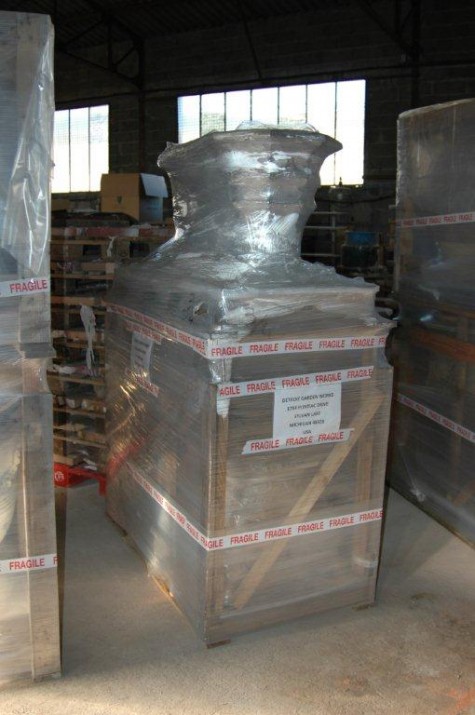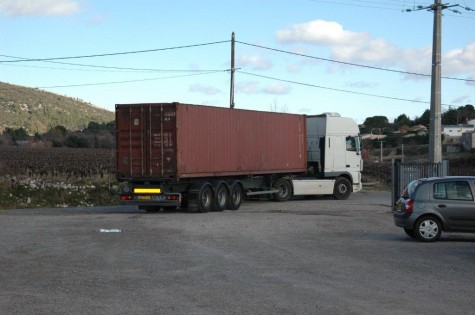This week is all about the garden-French style. Our first container stuffed full of glazed French terra cotta has been unloaded. Our second container sailed through customs, and will be delivered Friday morning. Though we represent the garden as expressed in many countries and periods, our spring will equally celebrate French garden style. Our first container of artisanal French glazed garden pots makes a big move in that direction. The second container is chock full of French garden ornament both antique and vintage, most of which Rob sourced from small local antique markets. When I say local, I mean to invoke the rural French two-track pictured above. To describe Rob as a buyer is a bit of a disservice. He is an afficianado of garden culture wherever that might take him.
Dealers in French garden antiques and vintage ornament appreciate this. His respect is sincere, and his efforts to be educated about another place-considerable. He is incredibly observant and tuned into what he sees. All of these pictures are from his trip to France last September, most of them from rural areas. The garden is very much a part of French culture. Like many other places, the roots of the garden are agricultural. The production of olives and olive oil, lavender, cheese and bread have very much influenced the landscapes. But the French manage to go on to represent the most utilitarian garden features with great style.
Much has been written and photographed about the grand and formal gardens in France. The photographs of Michael Kenna are especially extraordinary. But rural France-the buildings, the roads, the landscapes, the gardens, the farms-there is much to be learned about how French people celebrate their relationship with nature.
Every picture he takes is a visual representation of his impression and interest. I am quite sure he was enchanted by this carriage house entry, the white entry doors, the stone walls, the shingles, the lattice iron work on one side only, the robust and unpruned yews, the gravel surface. This is well designed, but not overly precious.
Many of the walled gardens featured ivy of one type or another. This garden gate features massive walls and gate piers with elaborate stone caps. The shallow shingle roof and tall wood gates make for a friendly statement about privacy. The vines on the walls are asymmetrical-they have been left to their own devices.
This crimped wire gate based on diamonds is quite tall and narrow. How the wire emerges from the top of the gate, is charmingly unfinished.
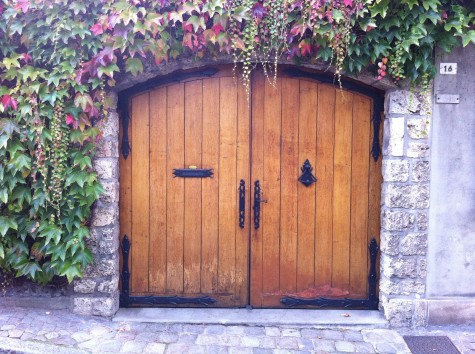
The boston ivy swept over one side of these pair of gates is lovely. I am sure the ornament on the right gate is an iron door knocker. On the left? The iron work on the doors is strikingly organic in design.
Many of the places he visited, the garden outbuildings and walls were utilitarian. The low and massive wood gate is more about invitation, than closure. They are working buildings. The color of these barn doors is a variation on what I call French blue. I find it very hard to make blue work in a landscape, but here the color seems so the color seems so perfectly right. 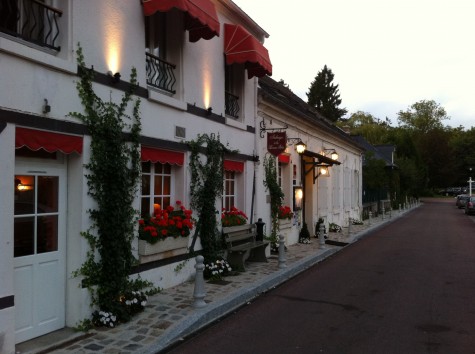
I was so struck by the proximity of the road, to the buildings. In our country, we have very wide roads, turn lanes, and curbs. Our buildings by zoning law are only allowed to be built far off the road. This photograph-all about intimacy. The traffic bollards-useful, and beautiful. The road and the building-close.
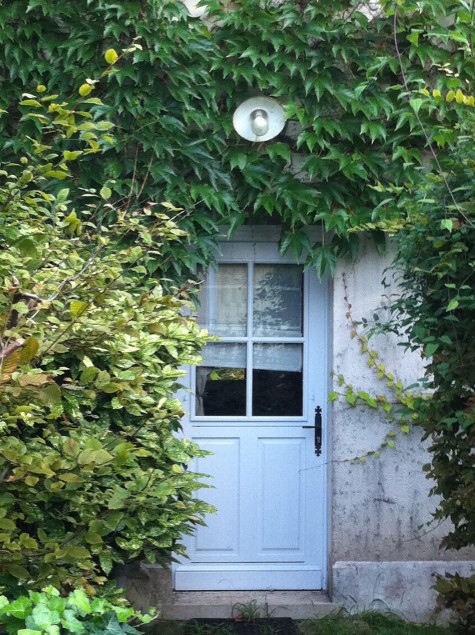
It would take some discipline for me to live with this front door landscape, but I am very sure I would be the better for the experience. Knowing what needs editing, and what doesn’t may be more of a gift than a skill.

Rob visited places in rural France I am unlikely to ever visit. How he travels the backroads and the small French villages means I have a better understanding of French garden culture. And a better idea of how to cultivate a garden.
This French door with an iron grille drenched in sunlight-beautiful. The vine swagging over the door isn’t bad either.
This simple weathered wood front door, and its attending boston ivy-just as beautiful.
A blue front door, casually attended by a climbing rose on the right side-this is as much about living and breathing as it is about gardening.

